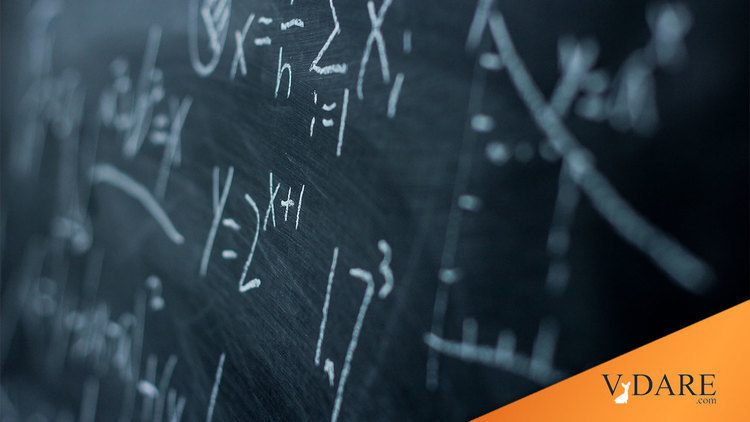An exciting weekend here at Derb Manor: I have been invited to a dinner next month with Prof. Yitang Zhang, who just recently cracked the Bounded Gaps Conjecture (BGC), a long-standing topic in Number Theory.
Mrs Derb was also invited; but a minute or so into my explanation of the BGC she suddenly remembered she has another engagement that evening.
Here is a very brief account of the BGC.
A prime is a number with no proper factors; that is, nothing divides exactly into it, other than 1 and itself. The number 28 is not a prime: 2, 4, 7, and 14 divide into it. The number 29, however, is a prime.
You can look at the first thousand primes here, and download the first 98 million of the little suckers here if you feel like it.
The primes go on for ever, as was proved by the ancients. No matter how big a number you name, there are primes bigger than that—an infinity of them, in fact.
However, the primes thin out as you explore ever bigger numbers. In the neighborhood of 1,000, roughly one number in seven is prime; in the neighborhood of 1,000,000, only about one in fourteen; in the neighborhood of 1,000,000,000,000, a mere one in twenty-eight, . . . Those are average densities, though; they hide a lot of random-ish clumping and scattering.
The BGC concerns that clumping and scattering; precisely, the gaps between consecutive primes.
- Gaps between consecutive primes.
Once you get past the gap from 2 to 3, which is length one, and which I’ll totally ignore from here on, every gap length is an even number. From 3 to 5 is a gap of two, from 5 to seven also two, from 7 to 11 is a gap of four, and so on.
If you tally up the first thousand prime gaps, 174 of them have length two, 169 have length four, 245 have length six, and so on. The biggest gap in the first thousand has length 34: that’s the gap from 1327 to 1361. If you histogram the first thousand gaps you get this (unless I’ve buggered up my code).
Now move up the number scale a way, say to a hundred million. What do the first thousand gaps after that look like? Here’s the histogram, to the same vertical scale. The biggest gap here has length 126; it’s the gap from 100014067 to 100014193.
- Primes thin out: bigger gaps appear.
As the primes thin out, bigger gaps show up; the histogram flattens out and drifts rightwards. That first histogram has median 5.3; the second has median 12.9 (though note they both have mode 6). In the thousand gaps starting with 3-to-5 there are 174 gaps of length two; in the thousand gaps starting with 100000007-to-100000037, only 76.
- Do the bigger gaps wipe out the smaller ones?
Question: Is it the case that there is some humongous number N beyond which there are no more length-2 gaps? And some number M beyond which there are no more length-4 gaps? So that beyond whichever is greater of N and M there are no more gaps—ever—of length less than 6?
Generalizing: Is it the case that for any even number g, there is some colossal number G beyond which there are no gaps of length less than g? To put it another way: Is it the case that as G tends to infinity, the smallest gap you will find in the numbers beyond G increases without bound?
That this is not the case—that there is some definite g for which an infinity of length-g gaps exist—is the Bounded Gaps Conjecture.
That’s what Prof. Zhang proved: that there is some such definite g. No matter how far out you go in the number system, marking primes as you go, you will never come to the last of the length-g gaps. There will always be more.
What actually is this number g? Prof. Zhang’s proof doesn’t tell us. It only tells us that g exists and is less than seventy million. Most number theorists believe that g = 2. This is the Twin Prime Conjecture, which no-one has so far been able to prove.
- There’s always someone worse off than yourself.
And if you think there’s a long way to go from seventy million to 2, consider Graham’s Number, the upper bound—like Prof. Zhang’s seventy million—of the solution to a problem in Ramsey Theory. Graham’s number is so inconceivably big you need a special notation to describe it. It lies far, far, beyond the everyday zone of trillions and quadrillions.
Yet until recently most Ramsey Theorists believed the actual solution to the problem is 6! (Opinion has shifted: we are now pretty sure it’s bigger than 11.)













